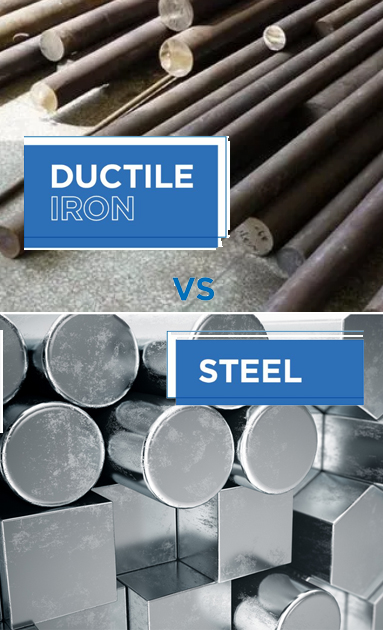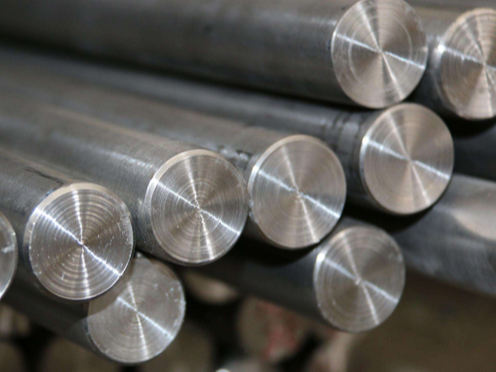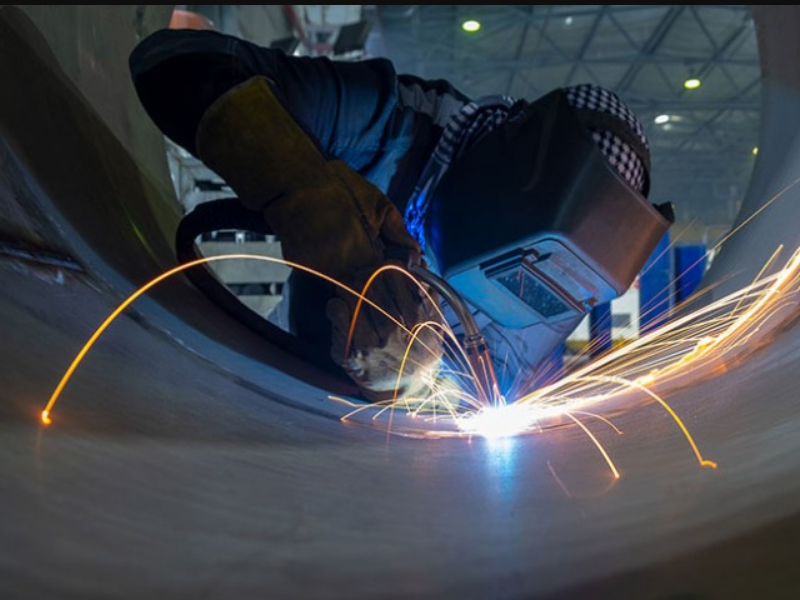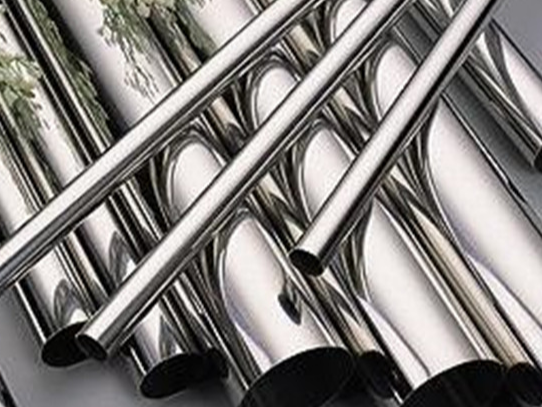
Steel and iron are two of the most common materials used in the manufacturing industry. They are used to make a wide range of products and components. While iron and steel look similar, though, they are two unique materials with their own respective characteristics and qualities.
What is Iron?
Iron is the fourth most common element in the Earth’s core, mantle, and crust by weight. It’s a very significant metal, as it helped propel human civilization through history, and it’s still used in numerous metal manufacturing processes to this day. It’s a very versatile mineral used across all industries.
Pure, refined iron is a silvery-white substance with subpar mechanical properties since it’s very soft and brittle. Despite poor mechanical properties, pure iron has excellent thermal and electrical conductivity and exceptional magnetic properties. However, pure iron is very susceptible to oxidation, as it really combines with oxygen from the atmosphere, making it exceptionally difficult to find iron in its pure form.
Types of Iron
As previously said, pure iron isn’t really useful since it’s very soft and reactive. However, its properties are greatly enhanced when it’s alloyed with other metals and non-metals. Thus, all materials that people broadly refer to as iron are actually different types of iron-based alloys. There are several types of iron:
Pig Iron — Pig iron is iron in its basic, raw form, which is molded into blocks, otherwise known as pigs.
Cast Iron — cast iron is an alloy with very high carbon content, which is melted, poured, and allowed to cool and harden. It’s often used for producing structural shapes.
Wrought Iron — wrought iron has a lower carbon content and plenty of impurities, which makes it softer than cast iron, allowing you to reheat and reshape the metal.
History of Iron Production
Iron was undoubtedly known to the ancient world, and one of the earliest examples is beads made from meteoritic iron ore dating back to 3,500 BC Egypt. Mankind didn’t extract iron from the Earth due to a lack of technological knowledge, so they associated this metal with heavenly origins. Egyptians continued to work with meteoritic iron until 2,500 BC.
At the same time, samples of smelted iron can be found in Asmar, Mesopotamia, and Syria, dating between 3,000 and 2,700 BC. The Hittites were among the first to smelt iron between 1,500 and 1,200 BC, and it’s likely that the practice of iron smelting spread throughout the rest of the ancient world, ushering in the Iron Age.
Cast iron first appeared in the 5th century BC in China but was hardly used in Europe until the medieval period. Cast iron eventually replaced wrought iron towards the end of the 18th century, when its use became incredibly widespread, furthering the development of construction, transportation, and numerous other industries.
What is Steel?
Steel is the backbone of modern industry and quite possibly the most versatile alloy used in modern production. Steel is an alloy of iron consisting primarily of iron and carbon — a non-metallic alloying element that clearly distinguishes iron from steel. Steel contains anywhere from 0.002% to 2.14% carbon, more than wrought iron, and less than cast iron.
Admittedly, this is a small amount of carbon by weight, but it results in significant physical enhancements making steel both harder and stronger than pure iron. In its most basic form, steel is typically made of iron and carbon, with negligible traces of other elements — this is called carbon steel.
However, adding additional alloying elements, such as chromium, nickel, manganese, and vanadium, can further enhance its properties. This type of steel is mostly used in the construction industry and the production of industrial hardware, such as knobs and handles, which don’t have specific tensile strength requirements.
Types of Steel
As an alloy, steel can be enhanced with different amounts of different chemical elements, resulting in more than 3,500 different steel grades, each with its unique properties. However, these grades are typically grouped into four different types of steel:
Carbon Steel
Carbon steel got its name because it’s primarily made of iron and carbon, with a minute and negligible traces of other elements. The resulting material is exceptionally strong but very susceptible to corrosion. Carbon steel is further categorized according to its carbon content into low-carbon or mild steel, medium-carbon steel, and high-carbon steel.
Alloy Steel
Alloy steels are made by mixing carbon steels with alloying elements that give steel distinct qualities. These elements include chromium, cobalt, molybdenum, nickel, tungsten, vanadium, and traces of other alloying elements.
Tool Steel
Tool steels are known for their exceptional hardness and high-temperature resistance, which is why they’re used to produce various tools, including ones that would cut through other types of steel.
Stainless Steel
Stainless steel is probably the best-known steel on the market and one of the most widespread steels used in industries with high hygienic requirements due to its corrosion resistance. This is achieved by adding at least 10% of chromium to the iron-carbon mixture, resulting in steel that’s suitable for aerospace, medical equipme
All steel contains iron, but it also contains carbon. The addition of carbon is what distinguishes iron from steel. By weight, steel contains about 2.14% carbon. Although that’s a relatively small amount of carbon, it results in significant physical changes. Steel, for example, is both harder and stronger than pure iron. And unlike iron, steel isn’t an essential mineral. You don’t need to consume steel as part of your diet.
The primary difference between iron and steel is that the former is a metal, whereas the latter is an alloy. Iron is simply a metal element that occurs naturally on Earth. In comparison, steel is a man-made alloy that’s made by mixing iron and carbon together.
The difference between iron and steel is simply that iron is an element and steel, in its most basic form, is an alloy of iron and carbon. Some may believe that “wrought iron” is, in some manner, also referring to steel since “wrought” means forged. The terms go back to the origins of ironwork, even before it was done on an industrial scale. The initial refining of iron from ore was, by today’s standards, a crude process, resulting in cast material that was full of defects and inclusions. Making “wrought iron”, the thermomechanical process of forging the cast iron, was the means to further refine and improve iron, making it more useful as a structural material.
Steel Vs. Iron Properties
Steel is stronger than iron (yield and ultimate tensile strength) and tougher than many types of iron as well (often measured as fracture toughness). The most common types of steel have additions of less than .5% carbon by weight. Higher percent carbon additions, while increasing strength, will cause the steel to become brittle. Other elements commonly found in steel are manganese, silicon, phosphorus, and sulfur. The class of steels called “alloy steel” may also have additions of nickel, chromium, molybdenum, and vanadium. Stainless steel is a popular low carbon content steel that contains chromium. Each added element, even in small amounts, contributes additional desirable properties to the steel alloy. When the recipe for the steel alloy is controlled and the material is processed correctly, an alloy consisting mostly of iron becomes one of the most useful materials ever invented.





Related Comments